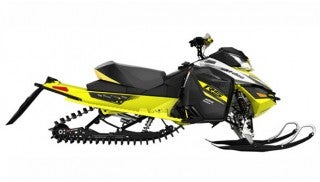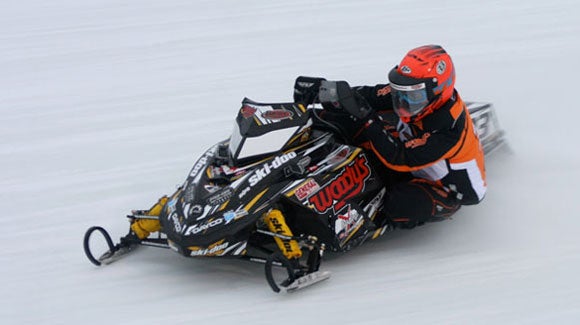’07 BRP Ski-Doo 4Strokers

If you like fun, nimble sleds that may approach 20-plus miles per gallon and won’t break the bank, then you need to check out Ski-Doo’s new Freestyle-based models.
While the single cylinder 300cc engine remains, the line now adds the same 550cc fan-cooled twin that powers the full-sized REV. And there is a new 4stroke twin that is a major surprise. It is borrowed from the Can-Am ATV line and is specifically adapted for sleds. This 800cc V-twin makes a challenge to Yamaha’s all-new trail Phazers. We were very impressed with the ATV powerplant and how it performed in the Freestyle type chassis.
We didn’t care for the last V-twin 4stroke we saw from Ski-Doo. It was cumbersome, heavy and slow. It was underpowered for the type of chassis it was expected to propel and left us with a negative attitude toward Ski-Doo 4stroke prowess. The new Freestyle-based models really caught our attention. Initially, we felt that we had to give the sled a ‘mercy’ ride just so we could say that we had ridden it. Oops! A day and half later, we got off the Ski-Doo V-twins and got back to business. We really were impressed with the responsiveness and overall feel. If bang for your buck is a concern, check into these V-twin powered Ski-Dooes.
When we asked a few questions and did a little background research, we discovered that BRP/Ski-Doo has been utilizing the V-twin powerplant in Scandinavia for the last season or two. That explains why the clutching and overall powertrain feel is so spot on. This was a very good move. Of course, when your motor has the bottom end that this ATV-based 4stroker has, clutching needn’t be racer-sharp. And putting the motor in a lighter weight chassis helps immensely as well. We came to the sled with remarkably low expectations. Heck, we figured if the V-twin Ski-Doo could muster up more performance than Polaris’ doggy Frontier ever could… well, we’d be happy.
On a closed course trail, we tried the short-tracked Ski-Doo against the trail Phazer prototype. We would switch from one rider to the other after a lap or so. What we discovered is that while the Ski-Doo is marketed toward buyers looking for a good buy and not racer-wannabes, the Ski-Doo will not embarass itself head to head with the new lightweight Yamaha 4stroke—despite the Phazer’s great power output. The Phazer will roll out its top speed on long straights, but the Ski-Doo 4stroker seemed to pull out of the turns a bit harder. Remember that low end ATV torque we mentioned?
The Ski-Doo has a more traditional front A-arm suspension that handles more like you would expect from a REV. The Yamaha uses very long positioning arms that provide ample travel but a great deal of side-to-side action. Yamaha claims this is on purpose and is designed in to give younger riders greater motocross feel in the bumps. We think it’s too much yaw and makes the Phazer too twitchy in the bad moguls. The Ski-Doo felt more secure, but its low-buck shocks won’t take the abuse for long and will fade quickly. So, it’s a trade-off.
When we ran the Phazer and V-twin Ski-Doo head-to-head, neither of us riders could get a big advantage over the other. Where the Phazer could achieve better top speed, the Ski-Doo would gather it back in on the turns. Frankly, it was a big shock to us that the Ski-Doo was as good as it was.
It comes with the REV seating arrangement, which we still feel is the best overall positioning for many of us veterans. Yamaha’s Phazer is close, but the seat is definitely designed for a younger, narrower hard butt crowd. It fits wider, older guys like a thong. The Ski-Doo is marketed for a less aggressive, more mature and comfort-oriented rider.
We’ll save you the spec charts. You can check that online or at a dealership and draw your own comparisons. If you are looking for a nice overall package with decent performance, very good mileage potential and a more than fair starting price, check into the new V-twin powered Ski-Doos. Oh, yeah, that 550 Freestyle-based model is a hoot, too.








 Your Privacy Choices
Your Privacy Choices